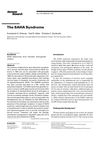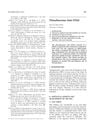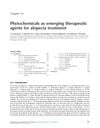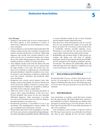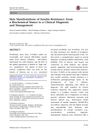Neuroendocrine Paraneoplastic Syndromes
March 2021
in “
Der Hautarzt
”
androgenetic alopecia growth hormone insulin-like growth factor‑1 Cushing syndrome glucocorticoid androgen-secreting tumors seborrhea acne hirsutism necrolytic migratory erythema glucagonoma hypoaminoacidemia male pattern baldness IGF-1 cortisol steroid testosterone oily skin pimples excessive hair growth NME
TLDR Neuroendocrine paraneoplastic syndromes often show skin changes, helping early diagnosis and requiring a team approach for best care.
Neuroendocrine paraneoplastic syndromes (PNS) often affected the skin, aiding early diagnosis through distinct cutaneous signs. In acromegaly, the growth hormone-insulin-like growth factor‑1 axis caused skin and mucosal changes. Non-iatrogenic Cushing syndrome showed skin signs similar to glucocorticoid intake, such as fat accumulation and striae. Carcinoid tumors caused flushing and diarrhea, with serotonin-induced fibrotic changes. Androgen-secreting tumors resulted in seborrhea, acne, hirsutism, and androgenetic alopecia. The pathogenesis of necrolytic migratory erythema in glucagonoma was linked to hypoaminoacidemia. The review discussed clinical features, pathophysiology, differential diagnoses, and treatments for neuroendocrine PNS with skin involvement, stressing the need for an interdisciplinary approach for optimal care.

